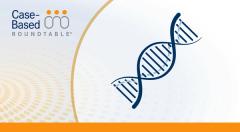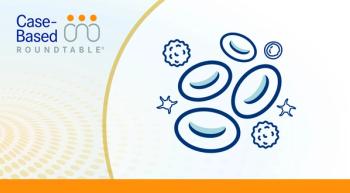
Subgroup Analyses of COMMANDS Trial Favor Luspatercept in MDS
Amer Zeidan, MBBS, discusses the primary end point and subgroup analyses performed on the COMMANDS trial of luspatercept-amt for treating anemia in patients with myelodysplastic syndromes.
Episodes in this series

Amer Zeidan, MBBS, associate professor of internal medicine (Hematology), chief of hematologic malignancies and director of early therapeutics research for Hematology, and leader of the clinical research team for leukemias and myeloid malignancies at the Yale Cancer Center, discusses the primary end point and subgroup analyses performed on the COMMANDS trial (NCT03682536) of luspatercept-amt (Reblozyl) for treating anemia in patients with myelodysplastic syndromes (MDS).
The phase 3 trial randomly assigned patients to receive luspatercept or epoetin alfa, an erythropoiesis-stimulating agent (ESA). The primary end point was 12-week red blood cell transfusion independence with mean hemoglobin increase of at least 1.5 g/dL in weeks 1-24. In the luspatercept arm, 86 of 147 patients (59%) reached this end point, compared with 48 of 154 (31%) in the ESA arm.
Subgroup outcomes for duration of transfusion independence favored the luspatercept group, according to Zeidan. These included patients with transfusion burden of under 4 units per 8 weeks, those with serum erythropoietin level of at least 200 U/L up to the trial’s limit of 500 U/L, patients with presence or absence of baseline SF3B1 mutations, and patients with ring sideroblasts. Although the rate of transfusion independence appeared similar in the ring sideroblast–negative subgroup at 46.9% with luspatercept vs 50.0% with ESA, these patients did show superior durability of response with luspatercept. The overall median duration of transfusion independence was 128.1 weeks with luspatercept vs 89.7 weeks with ESA.
TRANSCRIPTION:
0:08 | The primary end point of the trial was rate of…12-week transfusion independence combined with a mean hemoglobin rise of 1.5 g/dL. The primary end point was met; 60% of patients on the luspatercept arm achieved that vs around 30% in the ESA arm. In subgroup analysis, in all different kinds of subgroups, the benefit was in favor of luspatercept. So that’s when you looked at different transfusion burden, when you looked at erythropoietin level…more than 200 [U/L], of course up to 500 [U/L]—which was the maximum erythropoietin level allowed on the trial—the presence of SF3B1 mutation, and in patients who have ring sideroblasts. In patients who did not have ring sideroblasts, the rate of transfusion dependence appeared similar but the durability was longer with luspatercept. The median duration of transfusion independence with luspatercept across the trial was 2.5 years compared [with approximately] 1.5 years with ESA.


















































